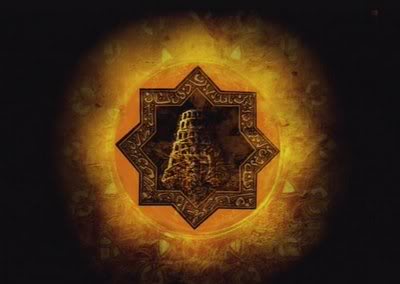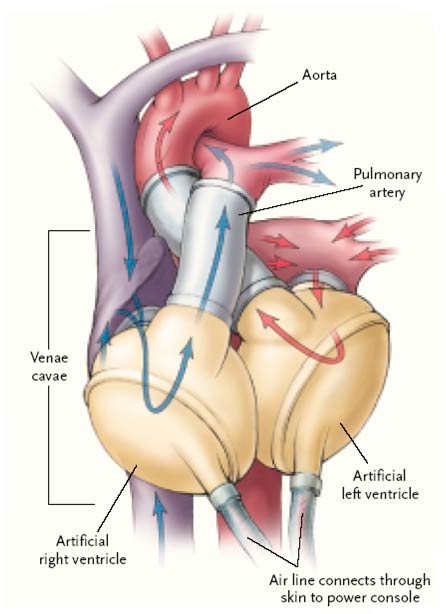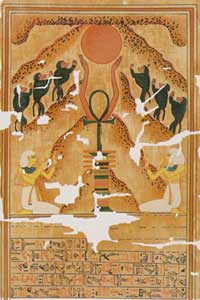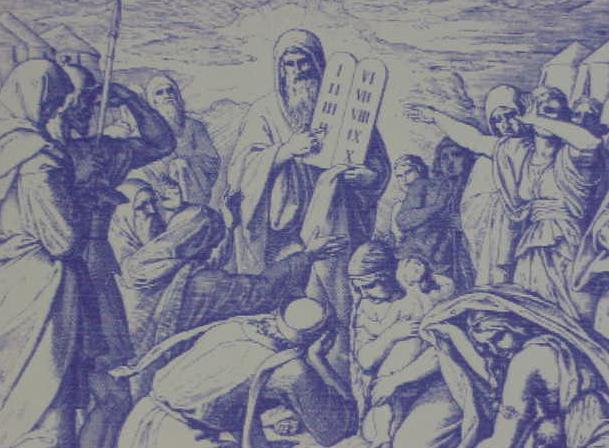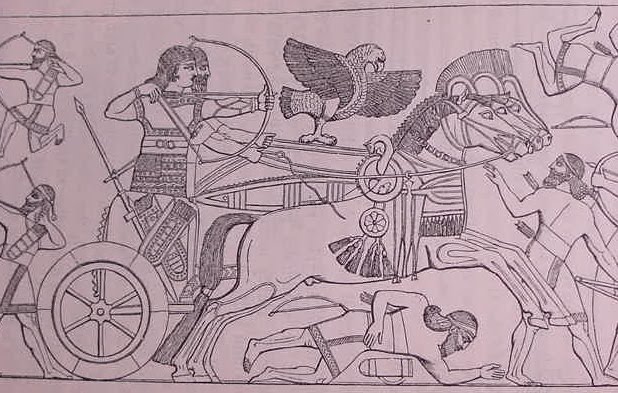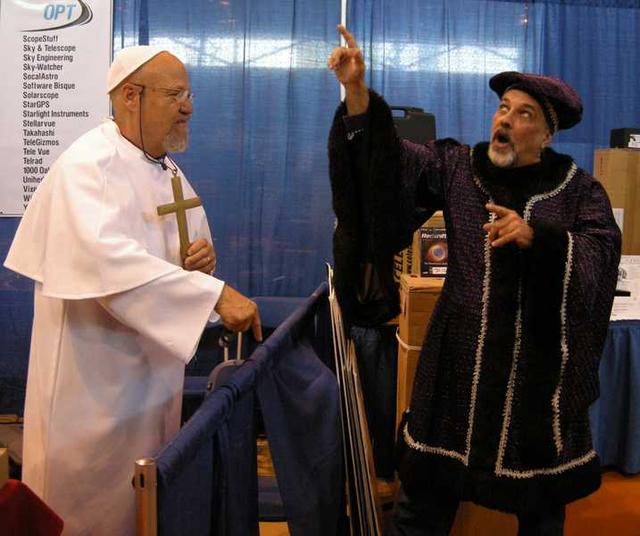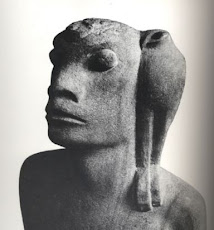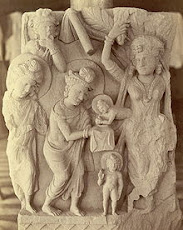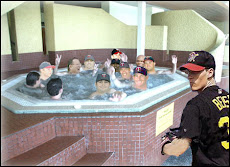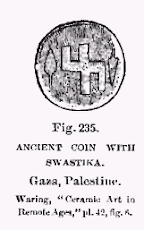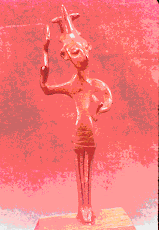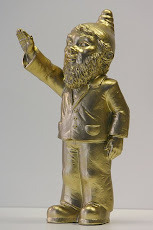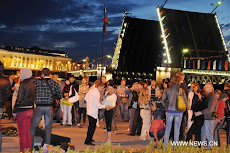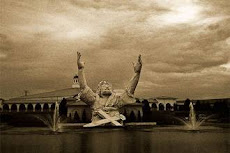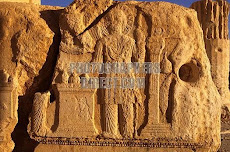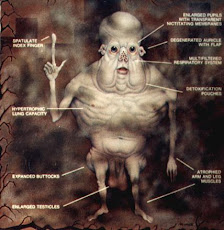G.J. Von Lauchen aka Rheticus was the only pupil of N. Copernicus. After having spent two years with Copernicus in Frauenburg (Frombork) he went to Danzig where he published his Narratio Prima or the First Report (1540) which is still considered to be the best introduction to Copernicus' De revolutionibus orbium coelestium. In 1542 Rheticus traveled to Nuernberg to supervise the printing of the Copernicus' book by Johannes Petreius.
A short passage in his Narratio (p. 465,12; 462,22,35) is the best key unlocking the astrological taproot of De revolutionibus. In this passage he refers to the sun not only as God’s steward of nature and king of all distinguished with divine Majesty, but also explains that the sun, like the heart in a body, guides the stars: like a ruler who does not need to go to various towns in order to execute his official duty, so the heart does not have to go to head, to feet, or to other part of the body in order to sustain life. This was a perennial mantra of all heliocentric astrologers throughout the ages. Let me decode this passage for you
Vedic Astrology is called “Jyotish” in Sanskrit Jyoti = Light + Isha=Lord = “Lords of Light” or “Science of Light” i.e. Heliocentrism. Jyotish i.e. Astrology was considered the most important part of the Vedas. In Hindu Pantheism the universe is evolving from the central Sun, the POINT (puru, like that of Big Bang), the ever-concealed germ. The central Sun is Deity – the World Soul. It is also the Chakra or circle of Vishnu.
The Babylonian astrologers were describing the sun as the fiery heart of the world, which vivifies the whole of this great organism, and as the stars obey its command, it reigns supreme over the universe. The radiance of its splendor illuminates the divine immensity of the heavens, but at the same time in its brilliance there is intelligence; it is the origin of all reason, and, as a tireless sower it scatters unceasingly on the world below the seeds of a harvest of souls. Our brief life is but a particular form of the universal life…
Ancient Egyptians expressed the same dogma as follows: “The heart is the center, its vessels lead to all the members; whether the doctor…lays his finger on the forehead, on the back of the head, on the hands, on the place of the stomach, on the arms, or on the feet, everywhere he meets with the heart (i.e. pulse) because its vessels lead to all the members.” The heart was therefore called also “the beginning of all the members.”
'As Above, so Below' proclaimed the basic, Hermetic dogma of astrology and the Greeks expressed the same idea in two corresponding terms: macrocosm and microcosm that suggested the same patterns were reproduced in all levels of the cosmos, from the largest scale (macrocosm or universe-level) all the way down to the smallest scale (microcosm, or sub-sub-atomic level). Now you better understand why the model of the atom mirrors the structure of the solar system.
In the dialogue Philebus (28d-30d), Plato argued that human beings and the universe are both composed of an elemental body and a rational soul, and that just as the human body derives from the universe's body, the human soul must derive from the universe's soul. The universe is, therefore, not only an orderly system but an intelligent organism as well. Plato expounded this theme at greater length in the Timaeus (29d-47e), where he explained how the structure of the human being parallels that of the universe through certain correspondences in body and soul. Just as the body of the universe is spherical, and its soul is composed of orbits along which the planets wander, so too the soul of the human being is composed of orbits along which its emotions rove.
It was possible to envision the zodiac as a great man lying in a circle with his head at Aries and his feet at Pisces (exactly like the Hindu purusha). And because of the astrological associations of planets with the zodiacal signs, the correlation of the heavens with man was both anatomical and psychological. For since the planets had definite temperaments, the zodiacal man had not only control over the various parts of our bodies but the planets influenced our souls as well.
In one of the Hermetic fragments preserved by Stobaeus (5th century AD), we find that the planets are actually in us. That is why we breathe, shed tears, laugh, grow angry, beget children, sleep, speak, and have desires. For tears come from Zeus, speech from Hermes, anger from Ares, sleep from Luna, desire from Aphrodite, and laughter from the Sun.
In the 17th century French representation of the chakras, human body is viewed as a reduced solar system in which heart (nous) corresponds with the sun (nous). In Descartes’s philosophy heart is a hot vessel, kind of ionization chamber setting in circular motion (Cp. Bohr’s model of the atom) electrons and ions within the nervous system to originate a thought within the brain. Tantric Buddhists use practices known as chandali to let energy rise through the chakras to help towards enlightenment symbolized by aureola around the head.
The sun placed on the chest of St. Thomas Aquinas by Fra Angelico in his portrait of the Doctor Angelicus expresses the same idea which Rhetikus formulated in words in his Narratio. The astrological correspondence between the sun and the human heart was always present in Greek language in which the noun nous has double meaning: sun and heart. Accordingly, the astrologers Vettius, Valens, Rhetorius, Proclus referred to sun as φώς νοέρόν (intelligent light which may produce intelligent design).
Biblical Medicine vs. Heliocentric cardiology
The event that caused the title “father of modern biology” to be bestowed upon William Harvey was his discovery, in the early 1600s, that the ordinary engineering principles that govern the pumping and flow of liquids are capable of accounting for the functions performed by the heart, an organ that had previously been thought to belong in the realm of unknowable.
According to Encyclopedia Americana W. Harvey whose description of the circulation of blood through the body established the first principle of modern physiology and medicine, was a staunch follower of Aristotle and adopted his basic vitalism. His views on the circulation of the blood reflect the Aristotelian theories of the central, sunlike, monarchical role of the heart. In other words, Harvey viewed human heart as the Aristotelian prime mover and thus promoted mechanistic thinking in biology. And although the concept of the heart as a pump is absent from Harvey’s great work Anatomical exercises concerning the motion of the heart and blood in animals, the idea does occur in a set of his lecture notes on anatomy.
We have two competing views on human life: “The life of all flesh is the blood thereof” (Lev 17:14; Dt. 12:33) and Bushnell’s view that “The life of man is his heart” which was inspired by the Harvey doctrine of the heart. It is easy to prove the superiority of the Biblical insight into functioning of human body. We influence the composition of our blood in two ways: by inhaling the mixture of gases called air and by taking in our daily foods. You'll grasp the paramount import of the Biblical dietary laws while reflecting on a simple case of one of diseases caused by an acute deficiency in the amount of glucose in the blood. Hypoglycemia which causes nervous syndromes such as psychastenia, neurasthenia, muscular asthenia, migraine, petit mal, narcolepsy, epilepsy, and psychosis can be cured very fast and easily by observing a simple diet. We can slow down or speed up movements of our hearts by taking various foods or drugs.
If we inmhale a polluted air and take in poisonous foods we can even damage our internal organs including heart (think about alcohol and liver). And the heart of the cosmic man (purusha) won't fix the failures of our hearts.
Interestingly the term “Magisterium” denoting the teaching of the Catholic Church also means “philosopher’s stone.” Following the tradition of Aristotle who was raised by Th. Aquinas to the rank of a Church Doctor the medieval alchemist believed that man’s body, like all other material things, was composed of four elements, earth, air, fire and water. Each individual had his own particular mixture of these – his temperamentum, as they called it. This was determined at conception and birth by the influence of the constellations and planets. The aptitudes, weaknesses and chances of success or failure of each human being sprang from his elemental composition. Since no one had been properly mixed since Adam, the problem emerged of discovering some sovereign remedy – secretum maximum – which would cleanse and rectify man’s composition and so produce a superman, full of physical and mental vigor and enjoying a life prolonged through many joyous centuries. Hence the persistent search for the Elixir, or philosopher’s stone, which should produce these marvelous results, as well as transform the baser metals into gold, which, in ancient Egypt, was known to be the flesh of the sun.
A popular encyclopedia of medieval heliocentric astrology compiled by M. Capella was titled The Marriage of Mercury and Philology (De nuptiis Philologiae et Mercurii). The celestial marriage described by M. Capella inspired two best-known scientists of the Renaissance era: Girolamo Fracastoro (1478-1553) physician and poet, and N. Copernicus (1473-1543) also physician, poet and astrologer. In his long poem, Fracastoro argues that the infecting semina of syphilis may arise from poisonous emanations sparked by planetary conjunctions. He even invokes a linguistic parallel between transmission of syphilis by sexual contact (coitus) and the production of bad seeds by planetary overlap in the sky, for he describes the astronomical phenomenon with the same word, as “coitum et conventum syderum” (the coitus and conjunction of stars), particularly our three most distant bodies: Saturn, Jupiter, and Mars. In other words, Fracastoro was led in his speculations by the perennial astrological principle: “As Above, so Below”. And so was Copernicus. I wonder, are there gay planets too? Possibly, that would, heliocentrically speaking, explain the cause of AIDS.
Coipernicus' expression “family of stars” suggests what Fracastoro described as “coitum et conventum syderum” and what follows logically polytheism! In one of the Thanksgiving Psalms from Qumran caves, God is addressed as “the Prince of the gods and the King of the venerable ones, and the Lord of every spirit, and the Master of every work.” This god whose rays the Essenes avoided to offend while defecating is the same sun god whom Copernicus describes as “sitting on the royal throne and reigning the surrounding family of stars.” E. Halley found the same astrological belief in Newton’s work. In his preface to the first edition of “Principia” he wrote some complimentary verses in Latin, ending in the line, “Nec fas est proprius mortali attingere divos” (it is not allowed to any mortal to come closer to the gods).
Let me contrast this pagan teaching with Christian lore as expressed by Tatian, a zealous young Syrian convert in his “Address to the Greeks”, which begins by attacking Greek philosophy and religion, and ends by denouncing Roman government and law. Tatian wants to show the Greeks – which he takes to mean “pagans” – their demoniacally induced delusions. Tatian says that baptism breaks the bonds that once bound us to destiny and to nature. Now, he says, we are superior to destiny, and instead of worshiping planets and daimones, we have come to know one Lord. We do not follow the guidance of destiny; rather, we reject those daimones who established it. Don Quixote, conceived initially as an elaborate parody of the “false and absurd” romances of chivalry is actually the parody of Jesus Christ fighting demons. Natural force of moving air driving windmills would be identified by the ancient philosophers as demon formerly known under the name Hera.
There seems to be a broad Jewish-Christian consensus on the following historical findings: that Jesus was born the son of the carpenter and Miriam; that he grew up with several brothers and sisters; that he had himself baptized by John; that he broke with his own family, his mother, brothers and sisters, and gathered a group of disciples around himself; that already in Galilee he found himself embroiled in a deepening conflict with the Jewish authorities; that as a result he found less and less response from the people. The Gospel of Mark says that when Jesus “went home his family went out to seize him, for they said, ‘He is insane (or beside himself)’” (3.21) The wording of the Greek text of Mark indicates that it was Jesus’ family (hoi peri autou) who went to seize him (3:21) and his family who were saying that he was insane (3:22). Many translators, however, apparently finding the obvious reading objectionable, have worded their translation in ways that avoid attributing such acts and beliefs to his family. The Revised Standard Version, for example, adds several words that suggest that his family intended to protect him from the hostile suspicions of outsiders: “When his family heard it, they went out to restrain him, for people were saying, ‘He has gone out of his mind’”. But such a translation misses the point. What Mark wanted to point out in this passage was the fact, that Jesus’ mother true to her Jewish roots was highly alerted by her son’s acceptance of the pagan belief in demons. Possibly she knew that Socrates was charged with atheism because of his belief that all the gods Homer praised were actually evil energies (daimones) that corrupted people, “seducing women and sodomizing boys,” and terrorized people into worshiping them as gods. Interestingly, in the same Gospel (Mk 10:18) Jesus emphatically denied that he was God and even reminded the Ten Commandments to prove that he was true to his and his mother’s Jewish religion. But later he was converted by Roman hierarchs into astrology. They even tried to convert the whole Jewish nation by praying during the Good Friday service of Easter Week:
For the conversion of Jews. Let us pray also for the Jews that the Lord our God may take the veil from their hearts and that they also may acknowledge our Lord Jesus Christ. Let us pray: Almighty and everlasting God, you do not refuse your mercy even to the Jews; hear the prayers which we offer for the blindness of that people so that they may acknowledge the light of your truth, which is Christ, and be delivered from their darkness.
And I wonder, who is the God they try to convert the Jews to?
Friday, March 21, 2008
Saturday, March 8, 2008
The Fake Passion of Galileo Galilei
Cicero, popularizing the Pythagorean heliocentrism in his Dream of Scipio, speaks of the sun as “the Lord,. Chief and Ruler of the other lights, the mind and guiding principle of the universe.” Invicta Roma was the empire of Sol Invictus or Kosmokrator (Ruler of Cosmos) and as such was “destined to rule the whole world” (Virgil).
When Rome succumbed to Jesus it did not embrace him as a Jewish teacher, a Rabbi, but as the sun god Helios (Apollo) whose halo used to symbolize the divine rank of Roman emperors as it now symbolizes the rank of sainthood. In other words, Jesus was naturalized as a Roman Catholic.
For centuries the Roman propaganda, especially Cicero's, proclaimed that the Jews were “a nation born to servitude” like all other “barbarians.” Therefore, from the historical Jesus of the Jews Rome wanted to disassociate itself once for all, or to replace him by Santa Claus. The first step in this direction was made when the basic notion of the heliocentrism and evolutionism were introduced into the “Ciceronian” Latin Vulgate. The notions of heliocentric jargon are ever present in Schoolmen's works, including Thomas Aquinas's.
Naturally, three years after publication of Copernicus's The Revolutions the Vulgate was recognized as “authentic” during the Fourth Session of the Council of Trent.. A. Hitler grasped the full meaning of this “recognition” when he mocked the Hebrew Bible as “Jewish folklore and therefore contemptible nonsense. And his ideologue, A. Rosenberg proclaimed to the whole world that “the earth-entered Jew lacks the soul.” Because for the Romans, slaves, like animals, were deprived of souls.
Sola Ecclesia vs. Sola Scriptura
There is this key event which unmasks the papal policy behind the promotion of the pagan heliocentrism and, at the same time, unravels all behind-the-scenes manipulations leading to what now can be perceived as the Galileo Show Trial of which the real purpose was to turn this ham mathematician into the True Martyr and the Idol of future generations of heliocentric scientists. Keep in mind that the protagonist of heliocentrism in Galileo's Dialogues who fronts for Galileo himself is called Salviati a variant of Salvator or Savior.
The main object of the Council of Trent was to face the religious challenge to papal authority expressed in the famous slogan Sola Scriptura. For the Reformation the ultimate authority which should be taken into consideration while disputing the problems of faith was to be the Bible and not the papal encyclicals or decrees.
This challenge was dealt with at the last opening on the 18th of January, 1562, all hesitation was set aside: Gaspar de Fosso, the Archbishop of Reggio made a speech in which he openly declared that tradition stood above Scripture. The authority of the church could therefore not be bound to the authority of the Scriptures, because the church had changed circumcision into baptism, Sabbath into Sunday, not by the command of Christ, but by its own authority. With this, to be sure, the last illusion was destroyed, and it was declared that tradition does not signify antiquity, but continual inspiration. (http://biblelight.net/bssb-1443-1444.htm)
So the letter of Cardinal Schoenberg printed together with Copernicus's book meant just that: the Church has the authority to reject the Biblical geocentrism and replace it with pagan heliocentrism. Sure, such a statement was never proclaimed officially but the church officials were well aware of the feeling of superiority of the Church over the Bible.
Using the language of Archbishop de Fosso we could say: Circumcision, Sabbath and Geocentrismn have not ceased by virtue of Christ's teaching (for he says that He has come to fulfill the law, not to destroy it), but they have been changed by the authority of the Church. You see, you have to believe in heliocentrism not because it is the truth but because the Church says it is the Scientific Truth.
Also arising from the council was a greater concern regarding decorum in art; the Council recognized the positive function art could serve, such as inspiring devotion. These concerns as illuminated by the Council of Trent and subsequent publications sponsored by the church all played a factor in the reception of Michelangelo's work.
Michelangelo included references to Dante and paganism, such as the mythic boatman Charon. In Dante's De Monarchia the “divine predestination” of the Roman people as the world ruling power is derived not from interpretations of the Hebrew prophets or from the appointments of Peter but proved from the genealogical tree of Aeneas and Creusa. Race and not religion is the decisive thing for Dante.
The Mind of the Pope who allegedly persecuted Galileo
Urban's lasting legacy was the Latin hymns of Catholicism, which were revised and rewritten, not only under his orders, but also with his active participation. The early Church chose to favor biblical canticles and psalms for its liturgy. One commentator on Urban's “improvements” has wisely observed that “Ambrose and Prudentius took something classical (i.e. pagan) and made it Christian; the revisers and their imitators took something Christian and tried to make it classical (pagan). The result may be sometimes perhaps poetry; but it is not piety.”
It was totally in the style of the English so-called Leda Bible which was so named from the decoration in the initial at the Epistle to the Hebrews which is a startling and incongruous woodcut of Jupiter visiting Leda in the guise of a swan. This and other decorations in the New Testament were taken from an edition of Ovid’s “Metamorphoses!” The Leda Bible also known as the Bishops' Bible became the backbone of the King James Version.
In harmony with the perennial Roman tradition Pope Urban VIII turned to magic and astrology for protection. He had astrologers cast the horoscopes of cardinals resident in Rome to find out when they would die; the details of his own horoscope were common currency in every street. Urban also ordered T. Campanella to perform a magical ceremony to protect him from the effects of an imminent lunar eclipse. Campanella, who had been arrested and imprisoned in 1589 for promoting classical communism and defending Galileo, had been released only a short time before the pope sent for him at the beginning of 1628.
In a ritual which Campanella seems to have devised for the occasion, a room in the Lateran palace was sealed; its walls were hung with white silk and sweet-smelling herbs and other substances were burned. Two large lamps represented the sun and moon, while other signs of the zodiac were present and astrological music, relating to Jupiter and Venus was played by people immune to evil astral influences. The intention was to create an alternative model of the heavens with favorable conjunctions of the stars and planets, whereby the malign effect of the lunar eclipse would be negated. The magical ceremony which Urban ordered T. Campanella to perform to ward off harm from a lunar eclipse and which incorporated the signs of the zodiac into an elaborate, far-from-Christian ceremony had been devised by Galileo when he taught mathematics at the University of Padua.
Astrology was built on the premise that the supralunary world of celestial bodies in constant motion influenced terrestrial events through the transmission of rays of light imparted with divine power. The human body was presumed to be a microscopic representation of the larger macrocosm of the universe. Celestial motion, combined with the qualities of individual celestial “bodies”, affected the four humors of the human body by imparting these light rays. In this way, celestial influence was held to be one of the most important determining factors that doctors considered when attempting to deal with human ailment.
If a doctor found that his patient’s horoscope predicted an early death, he could be more relaxed about the treatment because it would be ultimately useless. In 1608, the grand duchess of Tuscany, Christina wrote to Galileo asking him to cast a horoscope for her ill husband, Ferdinand I. Galileo wrote back on Jan 16, 1609, predicting a long life. Ferdinand died 22 days later. And that explains why Urban had chosen Campanella over Galileo to perform the magical ceremony.
That explains why Christian intellectuals considered astrological beliefs to represent an irreconcilable conflict with God's omnipotence. This was one of the issues for Parisian theologians who were involved in formulating the 219 Condemnations of 1277.
In 1301 the French astrologer Arnaud de Villeneuve prescribed the use of an astrological image for pope Boniface VIII's kidney stone. Campanella's two large lamp representing the sun and moon belong to the same department of astrology. Both de Villeneuve and Campanella were educated on the Arab astrologer Thabit's De imaginibus, a work articulating methods one may use to harness and direct celestial influence. The same method was used by the Queen of the British witches Sybil Leek while she was lecturing the NASA astronauts on her “scientific” astrology. Well, St. Thomas Aquinas went so far as to suggest that all terrestrial events depend upon celestial influence.
As late as 1799 the professor of astronomia at the University of Bologna was still required to produce an annual almanac for medical use. Professor Bernard Capp in his book English Almanacs 1500-1800: Astrology and the Popular Press (Cornell University Press, 1979) examined the contacts between members of the Royal Society in England and astrologers, and the concomitant continuing perception of astrology as a valuable academic discipline in 17th-century England.
Despite the religious opposition it encountered, a system of astrology based on Greek learning was quite attractive to the sophisticated intellectuals of the eighth and ninth -century Arabic world and those who employed them, because it promised to explain the universe in terms of a well-defined structure of interrelated “bodies” interacting in a predictable and logical fashion. Astrologers associated God not with the God of the Bible but with the Aristotelian Prime Mover or a huge engine setting in motion machina mundi.
Prime mover imparts motion to the sphere of Saturn, which in turn imparts motion of the Sphere of Jupiter and so forth, all the way down to the terrestrial realm, where earthly creatures receive the influence of the Prime Mover, altered by passage through each of the planetary spheres. The planets in this system could be best described as “cog-wheels”. In this way astrology was not far removed from modern mechanistic theories that are attractive, in part, because of their regularity and ability to explain the universe in a consistent mechanical manner. Let me remind in this context Dr. Jarvik's cold mechanical heart for a robot which can never replace the warm human heart. We cannot eat clock-work oranges. Can we?
Astrologers supplemented these mechanistic principles by ascribing characteristics to each zodiacal sign and planetary body based upon Egyptian and Roman mythology.
Another Arab astrologer, Al-Bitruji's book De motibus caelorum can be credited with with effective undermining of geocentric astronomy of the Bible. He postulated the existence of a set of poles for each planet, thus taking into account individual planetary rotations, rather than the single set of poles for the rotation of the universe around the Earth.
We may say that pope Urban VIII shared a folk belief in the ancient Mediterranean which was branded by the Bible as a superstition. Divination or “prophecy” through reading the signs and portents of the sky became also part of the state religion at Rome. There was a group of official priests known as augurs whose functions included reading omen in the sky. It turns out that Christianity did not eliminate the appeal of astrology to superstitious masses but actually reinforced it by establishing chairs of astrology in the centers of learning such as, for instance, La Sapienza.
In the world where Copernicus's sun god (Prime Mover) reigns supreme the Palestinians replaced the Jews as a “new chosen people”. They are showered billions of dollars for just being there and exterminating the “backward, superstitious Jews” who refuse to believe in Arab astrology embraced by the learned world as par excellence Science. The ancient wisdom warns, One of God's (not Prime Mover's) side is a majority. And that explains why the Jews are still with us and surely will survive a new flood of anti-Semitic propaganda and violence here and elsewhere.
Otherwise, we would be living in a cruel and inhuman world of Virgil's heliorobots “sacrificing” their own children:
I see…humanity in deadly sleep…
For Bacon and Newton, sheath’d in dismal steel,
Their terrors hang
Like iron scourges over Albion…
…cruel works
Of many wheels I view, wheel within wheel, with cogs tyrannic
W. Blake, Jerusalem
When Rome succumbed to Jesus it did not embrace him as a Jewish teacher, a Rabbi, but as the sun god Helios (Apollo) whose halo used to symbolize the divine rank of Roman emperors as it now symbolizes the rank of sainthood. In other words, Jesus was naturalized as a Roman Catholic.
For centuries the Roman propaganda, especially Cicero's, proclaimed that the Jews were “a nation born to servitude” like all other “barbarians.” Therefore, from the historical Jesus of the Jews Rome wanted to disassociate itself once for all, or to replace him by Santa Claus. The first step in this direction was made when the basic notion of the heliocentrism and evolutionism were introduced into the “Ciceronian” Latin Vulgate. The notions of heliocentric jargon are ever present in Schoolmen's works, including Thomas Aquinas's.
Naturally, three years after publication of Copernicus's The Revolutions the Vulgate was recognized as “authentic” during the Fourth Session of the Council of Trent.. A. Hitler grasped the full meaning of this “recognition” when he mocked the Hebrew Bible as “Jewish folklore and therefore contemptible nonsense. And his ideologue, A. Rosenberg proclaimed to the whole world that “the earth-entered Jew lacks the soul.” Because for the Romans, slaves, like animals, were deprived of souls.
Sola Ecclesia vs. Sola Scriptura
There is this key event which unmasks the papal policy behind the promotion of the pagan heliocentrism and, at the same time, unravels all behind-the-scenes manipulations leading to what now can be perceived as the Galileo Show Trial of which the real purpose was to turn this ham mathematician into the True Martyr and the Idol of future generations of heliocentric scientists. Keep in mind that the protagonist of heliocentrism in Galileo's Dialogues who fronts for Galileo himself is called Salviati a variant of Salvator or Savior.
The main object of the Council of Trent was to face the religious challenge to papal authority expressed in the famous slogan Sola Scriptura. For the Reformation the ultimate authority which should be taken into consideration while disputing the problems of faith was to be the Bible and not the papal encyclicals or decrees.
This challenge was dealt with at the last opening on the 18th of January, 1562, all hesitation was set aside: Gaspar de Fosso, the Archbishop of Reggio made a speech in which he openly declared that tradition stood above Scripture. The authority of the church could therefore not be bound to the authority of the Scriptures, because the church had changed circumcision into baptism, Sabbath into Sunday, not by the command of Christ, but by its own authority. With this, to be sure, the last illusion was destroyed, and it was declared that tradition does not signify antiquity, but continual inspiration. (http://biblelight.net/bssb-1443-1444.htm)
So the letter of Cardinal Schoenberg printed together with Copernicus's book meant just that: the Church has the authority to reject the Biblical geocentrism and replace it with pagan heliocentrism. Sure, such a statement was never proclaimed officially but the church officials were well aware of the feeling of superiority of the Church over the Bible.
Using the language of Archbishop de Fosso we could say: Circumcision, Sabbath and Geocentrismn have not ceased by virtue of Christ's teaching (for he says that He has come to fulfill the law, not to destroy it), but they have been changed by the authority of the Church. You see, you have to believe in heliocentrism not because it is the truth but because the Church says it is the Scientific Truth.
Also arising from the council was a greater concern regarding decorum in art; the Council recognized the positive function art could serve, such as inspiring devotion. These concerns as illuminated by the Council of Trent and subsequent publications sponsored by the church all played a factor in the reception of Michelangelo's work.
Michelangelo included references to Dante and paganism, such as the mythic boatman Charon. In Dante's De Monarchia the “divine predestination” of the Roman people as the world ruling power is derived not from interpretations of the Hebrew prophets or from the appointments of Peter but proved from the genealogical tree of Aeneas and Creusa. Race and not religion is the decisive thing for Dante.
The Mind of the Pope who allegedly persecuted Galileo
Urban's lasting legacy was the Latin hymns of Catholicism, which were revised and rewritten, not only under his orders, but also with his active participation. The early Church chose to favor biblical canticles and psalms for its liturgy. One commentator on Urban's “improvements” has wisely observed that “Ambrose and Prudentius took something classical (i.e. pagan) and made it Christian; the revisers and their imitators took something Christian and tried to make it classical (pagan). The result may be sometimes perhaps poetry; but it is not piety.”
It was totally in the style of the English so-called Leda Bible which was so named from the decoration in the initial at the Epistle to the Hebrews which is a startling and incongruous woodcut of Jupiter visiting Leda in the guise of a swan. This and other decorations in the New Testament were taken from an edition of Ovid’s “Metamorphoses!” The Leda Bible also known as the Bishops' Bible became the backbone of the King James Version.
In harmony with the perennial Roman tradition Pope Urban VIII turned to magic and astrology for protection. He had astrologers cast the horoscopes of cardinals resident in Rome to find out when they would die; the details of his own horoscope were common currency in every street. Urban also ordered T. Campanella to perform a magical ceremony to protect him from the effects of an imminent lunar eclipse. Campanella, who had been arrested and imprisoned in 1589 for promoting classical communism and defending Galileo, had been released only a short time before the pope sent for him at the beginning of 1628.
In a ritual which Campanella seems to have devised for the occasion, a room in the Lateran palace was sealed; its walls were hung with white silk and sweet-smelling herbs and other substances were burned. Two large lamps represented the sun and moon, while other signs of the zodiac were present and astrological music, relating to Jupiter and Venus was played by people immune to evil astral influences. The intention was to create an alternative model of the heavens with favorable conjunctions of the stars and planets, whereby the malign effect of the lunar eclipse would be negated. The magical ceremony which Urban ordered T. Campanella to perform to ward off harm from a lunar eclipse and which incorporated the signs of the zodiac into an elaborate, far-from-Christian ceremony had been devised by Galileo when he taught mathematics at the University of Padua.
Astrology was built on the premise that the supralunary world of celestial bodies in constant motion influenced terrestrial events through the transmission of rays of light imparted with divine power. The human body was presumed to be a microscopic representation of the larger macrocosm of the universe. Celestial motion, combined with the qualities of individual celestial “bodies”, affected the four humors of the human body by imparting these light rays. In this way, celestial influence was held to be one of the most important determining factors that doctors considered when attempting to deal with human ailment.
If a doctor found that his patient’s horoscope predicted an early death, he could be more relaxed about the treatment because it would be ultimately useless. In 1608, the grand duchess of Tuscany, Christina wrote to Galileo asking him to cast a horoscope for her ill husband, Ferdinand I. Galileo wrote back on Jan 16, 1609, predicting a long life. Ferdinand died 22 days later. And that explains why Urban had chosen Campanella over Galileo to perform the magical ceremony.
That explains why Christian intellectuals considered astrological beliefs to represent an irreconcilable conflict with God's omnipotence. This was one of the issues for Parisian theologians who were involved in formulating the 219 Condemnations of 1277.
In 1301 the French astrologer Arnaud de Villeneuve prescribed the use of an astrological image for pope Boniface VIII's kidney stone. Campanella's two large lamp representing the sun and moon belong to the same department of astrology. Both de Villeneuve and Campanella were educated on the Arab astrologer Thabit's De imaginibus, a work articulating methods one may use to harness and direct celestial influence. The same method was used by the Queen of the British witches Sybil Leek while she was lecturing the NASA astronauts on her “scientific” astrology. Well, St. Thomas Aquinas went so far as to suggest that all terrestrial events depend upon celestial influence.
As late as 1799 the professor of astronomia at the University of Bologna was still required to produce an annual almanac for medical use. Professor Bernard Capp in his book English Almanacs 1500-1800: Astrology and the Popular Press (Cornell University Press, 1979) examined the contacts between members of the Royal Society in England and astrologers, and the concomitant continuing perception of astrology as a valuable academic discipline in 17th-century England.
Despite the religious opposition it encountered, a system of astrology based on Greek learning was quite attractive to the sophisticated intellectuals of the eighth and ninth -century Arabic world and those who employed them, because it promised to explain the universe in terms of a well-defined structure of interrelated “bodies” interacting in a predictable and logical fashion. Astrologers associated God not with the God of the Bible but with the Aristotelian Prime Mover or a huge engine setting in motion machina mundi.
Prime mover imparts motion to the sphere of Saturn, which in turn imparts motion of the Sphere of Jupiter and so forth, all the way down to the terrestrial realm, where earthly creatures receive the influence of the Prime Mover, altered by passage through each of the planetary spheres. The planets in this system could be best described as “cog-wheels”. In this way astrology was not far removed from modern mechanistic theories that are attractive, in part, because of their regularity and ability to explain the universe in a consistent mechanical manner. Let me remind in this context Dr. Jarvik's cold mechanical heart for a robot which can never replace the warm human heart. We cannot eat clock-work oranges. Can we?
Astrologers supplemented these mechanistic principles by ascribing characteristics to each zodiacal sign and planetary body based upon Egyptian and Roman mythology.
Another Arab astrologer, Al-Bitruji's book De motibus caelorum can be credited with with effective undermining of geocentric astronomy of the Bible. He postulated the existence of a set of poles for each planet, thus taking into account individual planetary rotations, rather than the single set of poles for the rotation of the universe around the Earth.
We may say that pope Urban VIII shared a folk belief in the ancient Mediterranean which was branded by the Bible as a superstition. Divination or “prophecy” through reading the signs and portents of the sky became also part of the state religion at Rome. There was a group of official priests known as augurs whose functions included reading omen in the sky. It turns out that Christianity did not eliminate the appeal of astrology to superstitious masses but actually reinforced it by establishing chairs of astrology in the centers of learning such as, for instance, La Sapienza.
In the world where Copernicus's sun god (Prime Mover) reigns supreme the Palestinians replaced the Jews as a “new chosen people”. They are showered billions of dollars for just being there and exterminating the “backward, superstitious Jews” who refuse to believe in Arab astrology embraced by the learned world as par excellence Science. The ancient wisdom warns, One of God's (not Prime Mover's) side is a majority. And that explains why the Jews are still with us and surely will survive a new flood of anti-Semitic propaganda and violence here and elsewhere.
Otherwise, we would be living in a cruel and inhuman world of Virgil's heliorobots “sacrificing” their own children:
I see…humanity in deadly sleep…
For Bacon and Newton, sheath’d in dismal steel,
Their terrors hang
Like iron scourges over Albion…
…cruel works
Of many wheels I view, wheel within wheel, with cogs tyrannic
W. Blake, Jerusalem
Subscribe to:
Comments (Atom)



















































































































































































































































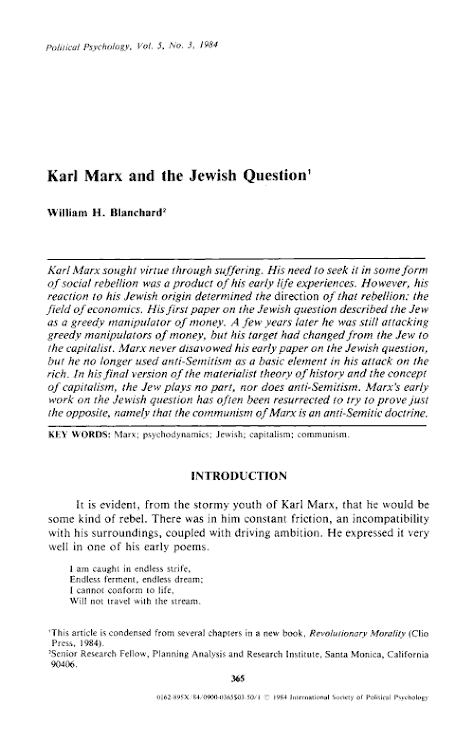











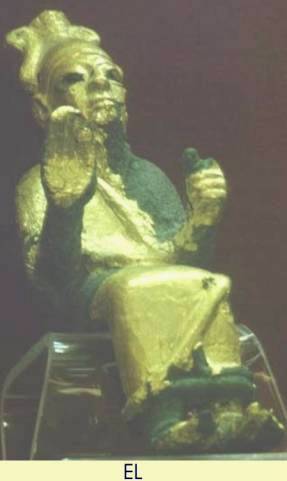

































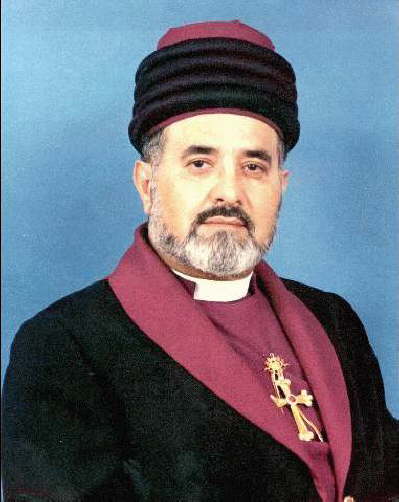+Anniversay+Dinner.jpg)





